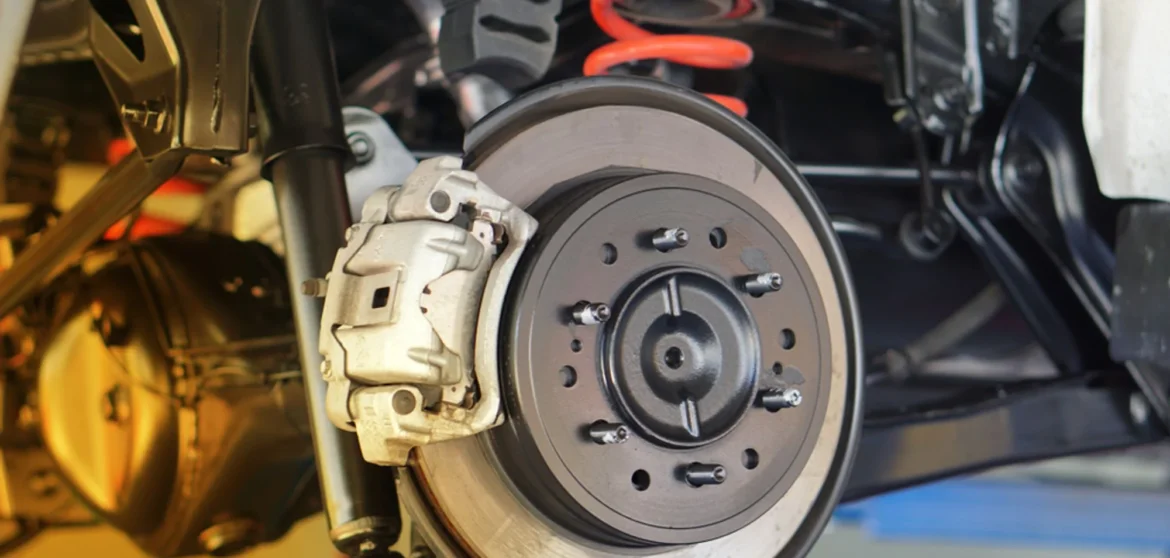Spongy Brakes: Causes, Fixes, and When to Seek Professional Help
Few things unsettle drivers faster than pressing the brake pedal and feeling it sink too easily under your foot. That “spongy” or soft brake sensation isn’t just uncomfortable it’s a sign your car’s braking system needs immediate attention.
In the UAE, where traffic moves fast and heat can test every part of your vehicle, a reliable braking system isn’t optional; it’s essential. Spongy brakes reduce stopping power and increase the risk of accidents, especially in emergency situations.
In this blog Drive UAE will help you understand what causes that soft pedal feel, how to fix it safely, and when it’s time to let a professional mechanic take over.
What Are Spongy Brakes?
Spongy brakes refer to a soft or “mushy” feeling when pressing the pedal. Instead of the firm resistance you expect, the pedal travels deeper toward the floor before the car starts to slow down.
In a properly functioning brake system, hydraulic pressure builds evenly through brake fluid, pushing calipers to clamp the brake pads onto the rotors. When air, leaks, or contaminated fluid interrupt this hydraulic flow, the pressure becomes inconsistent, resulting in that unnerving soft pedal.
It’s important to differentiate this from “hard” brakes (which resist pressing). Spongy brakes often signal internal issues within the hydraulic system, while hard brakes usually point to vacuum or booster problems.
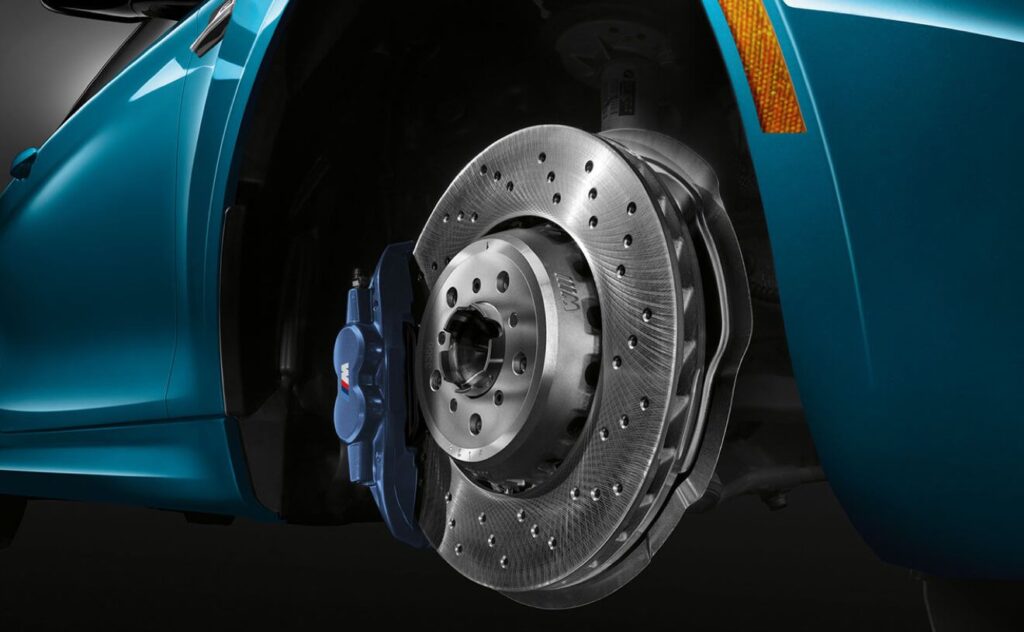
Common Causes of Spongy Brakes
Let’s break down the most frequent reasons your car’s brakes might lose their firmness.
1. Air in the Brake Lines
This is the most common cause. Even a small air bubble inside the hydraulic lines can dramatically reduce braking efficiency because air compresses, unlike brake fluid, which does not.
Air can enter the system during a recent fluid replacement, when a leak develops, or after a component like a caliper or master cylinder is serviced. The result? A “bouncy” or inconsistent brake feel.
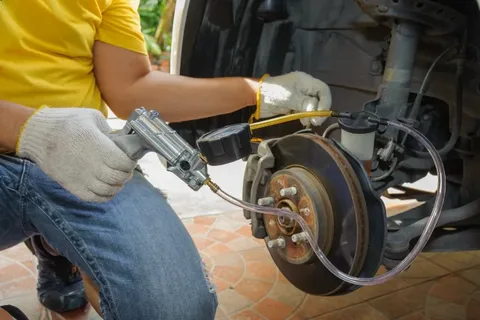
2. Brake Fluid Leak
A leak anywhere in the system: from the brake lines to the calipers, means your car is losing pressure. This can also lead to a dangerously low fluid level.
You might notice a warning light on your dashboard or oily patches near the wheels. Never ignore these signs; even a small leak can cause total brake failure if left unresolved.

3. Old or Contaminated Brake Fluid
Brake fluid absorbs moisture over time, especially in the UAE’s humid coastal areas. When this happens, the fluid’s boiling point drops, reducing its ability to maintain pressure during heavy braking.
If your fluid looks dark brown or cloudy instead of clear yellow, it’s overdue for a replacement. Regular brake fluid flushes (every two years or as per the manufacturer’s advice) help avoid this.
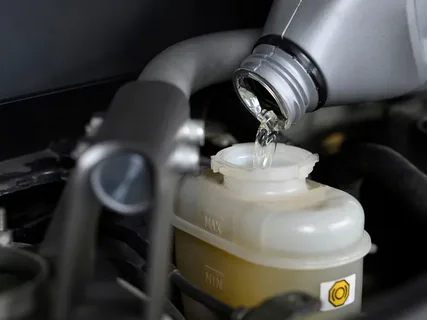
4. Worn Brake Pads or Calipers
As brake pads wear down, the caliper pistons extend further to make contact with the rotor. This can slightly increase pedal travel. However, if the calipers are sticking or leaking, they might allow air to enter, worsening the spongy feel.

5. Failing Master Cylinder
The master cylinder is the heart of your braking system. It converts pedal force into hydraulic pressure. If its internal seals wear out, fluid can bypass the chambers, causing the pedal to sink slowly even when held down.

How to Fix Spongy Brakes (Step-by-Step)
While some basic checks can be done at home, brake issues should be handled carefully. Here’s a safe, step-by-step overview of how to identify and address the problem.
Step 1: Check Brake Fluid Level
Start with the brake fluid reservoir, usually located near the back of the engine bay. The fluid level should sit between the “MIN” and “MAX” lines.
If it’s low, top it up with the manufacturer-recommended fluid type (DOT 3, DOT 4, etc.). Don’t mix different types, as this can compromise performance.
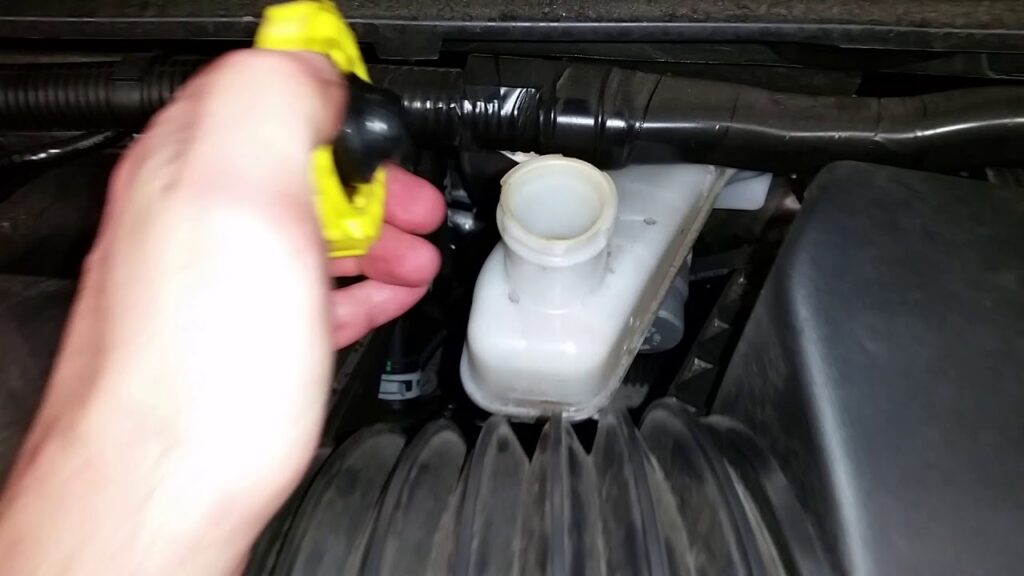
Step 2: Inspect for Visible Leaks
Look for wet or oily spots near the wheels, under the car, or around the master cylinder. Brake fluid has a distinct, slippery feel.
If you spot any leak, stop driving immediately and arrange towing to a garage. Continuing to drive could make the brakes fail entirely.
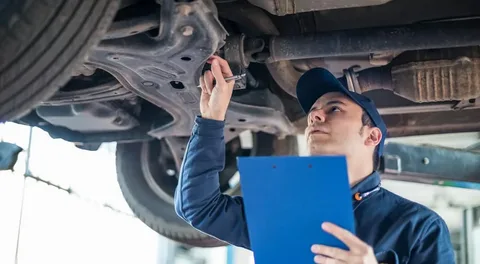
Step 3: Bleed the Brake System
Bleeding removes trapped air bubbles from the brake lines. It requires either a partner to press the pedal or specialized equipment.
Although many DIY tutorials exist, improper bleeding can make the problem worse. It’s best performed by a certified mechanic who can also inspect for hidden leaks.
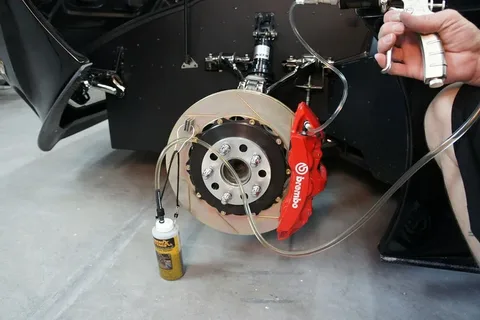
Step 4: Replace Contaminated Brake Fluid
If your brake fluid looks dirty or has absorbed too much moisture, it needs to be replaced. Mechanics use pressure bleeding machines to flush out old fluid and fill the system with fresh, clean fluid.
This restores braking efficiency and prevents corrosion inside the lines.
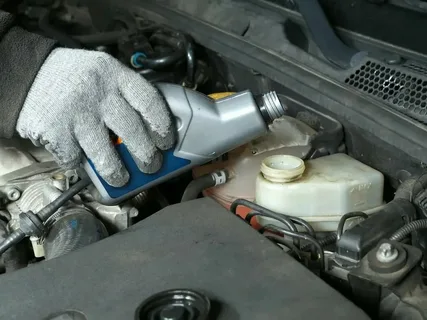
Step 5: Replace Worn Components
If bleeding and refilling don’t solve the issue, the problem may lie in worn-out parts, pads, calipers, or the master cylinder. Replacing these components promptly ensures your braking system remains reliable.
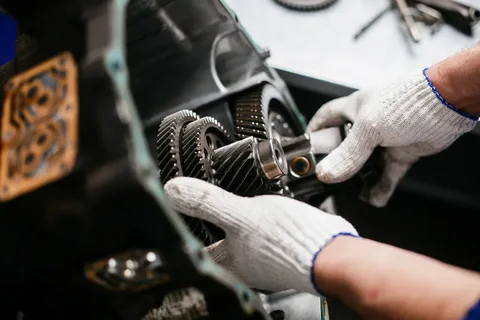
When to Visit a Mechanic
Even if your brakes start feeling slightly spongy, it’s worth getting them checked right away. Warning signs include:
- The brake pedal sinks to the floor.
- You hear grinding or squealing noises.
- The car takes longer to stop.
- The brake warning light flashes on the dashboard.
- Brake fluid levels keep dropping after topping up.
A certified mechanic can use diagnostic tools to detect leaks, air pockets, or internal cylinder failures that might not be visible to the eye.

Preventive Maintenance Tips for UAE Drivers
Prevention is better and cheaper than repairs. Regular maintenance keeps your brakes reliable and extends the lifespan of key components.
Here are a few practical tips:
- Have your brakes inspected every 10,000 km or at every major service.
- Use high-quality brake fluid designed for hot climates.
- Avoid mixing fluid grades.
- Replace brake fluid every two years or as per your car’s service manual.
- Choose workshops that use genuine parts and have certified technicians.
These habits not only prevent spongy brakes but also ensure consistent stopping power in Dubai’s fast-paced traffic.
Conclusion: Don’t Ignore a Soft Brake Pedal
A spongy brake pedal is one of those car problems that can’t wait. Whether it’s air in the system, leaking fluid, or worn parts, the earlier you act, the safer you’ll be.
In the UAE, where driving conditions can shift from urban traffic to high-speed highways in minutes, keeping your braking system in top shape is non-negotiable. Regular fluid checks, timely replacements, and professional inspections can save you from accidents and expensive repairs down the road.
If you ever feel your pedal losing firmness, take it as a clear signal: it’s time to get your car inspected. Because when it comes to brakes, peace of mind and safety go hand in hand.

